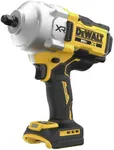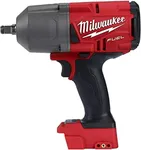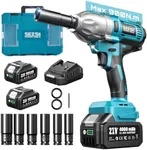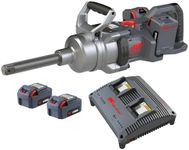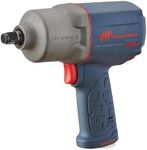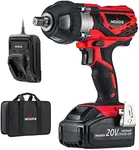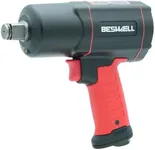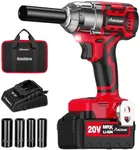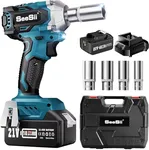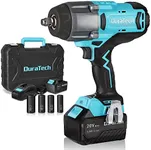Buying Guide for the Best Impact Wrench For Mechanic
Choosing the right impact wrench for a mechanic is crucial for efficiency and ease of work. An impact wrench is a powerful tool used to tighten or loosen nuts and bolts quickly and with minimal effort. When selecting an impact wrench, it's important to consider several key specifications to ensure it meets your needs and preferences. Understanding these specs will help you make an informed decision and select the best tool for your tasks.TorqueTorque is the amount of rotational force the impact wrench can apply. This spec is important because it determines the tool's ability to handle different sizes and types of fasteners. Torque is usually measured in foot-pounds (ft-lbs) or Newton-meters (Nm). For light-duty tasks, a torque rating of 100-200 ft-lbs may be sufficient. For more demanding automotive or industrial applications, you might need a wrench with 300-600 ft-lbs or more. Consider the types of jobs you'll be doing most often to choose the right torque level.
Drive SizeThe drive size refers to the size of the square drive that holds the socket. Common sizes include 1/4-inch, 3/8-inch, 1/2-inch, 3/4-inch, and 1-inch. The drive size you need depends on the size of the fasteners you'll be working with. For general automotive work, a 1/2-inch drive is typically sufficient. For smaller, more precise tasks, a 3/8-inch drive might be better. For heavy-duty industrial work, you might need a 3/4-inch or 1-inch drive. Match the drive size to the typical fastener sizes in your work.
Power SourceImpact wrenches can be powered by electricity (corded or cordless), air (pneumatic), or hydraulics. Corded electric wrenches offer consistent power but require an outlet. Cordless models provide mobility and convenience but depend on battery life. Pneumatic wrenches are powerful and commonly used in professional settings but require an air compressor. Hydraulic wrenches are less common and used for very heavy-duty applications. Choose the power source based on your work environment and the availability of power or air supply.
SpeedSpeed, measured in revolutions per minute (RPM), indicates how fast the wrench can rotate. Higher speeds allow for quicker fastening and loosening. However, high speed isn't always necessary for all tasks. For general use, a speed range of 2,000-3,000 RPM is usually adequate. Some models offer variable speed settings, which can be useful for different applications. Consider the types of tasks you'll be performing and whether you need the flexibility of variable speeds.
Weight and ErgonomicsThe weight and design of the impact wrench affect how comfortable it is to use, especially for extended periods. Lighter models reduce fatigue but may offer less power. Heavier models can be more powerful but harder to handle. Ergonomic features like comfortable grips, balanced weight distribution, and vibration reduction can make a big difference in usability. Think about how long you'll be using the tool and choose a model that feels comfortable and manageable for you.
Durability and Build QualityDurability and build quality are important for ensuring the impact wrench can withstand regular use and harsh conditions. Look for models made from high-quality materials like metal housings and reinforced components. Features like dust and moisture resistance can also extend the tool's lifespan. If you'll be using the wrench frequently or in tough environments, investing in a durable, well-built model is essential.


